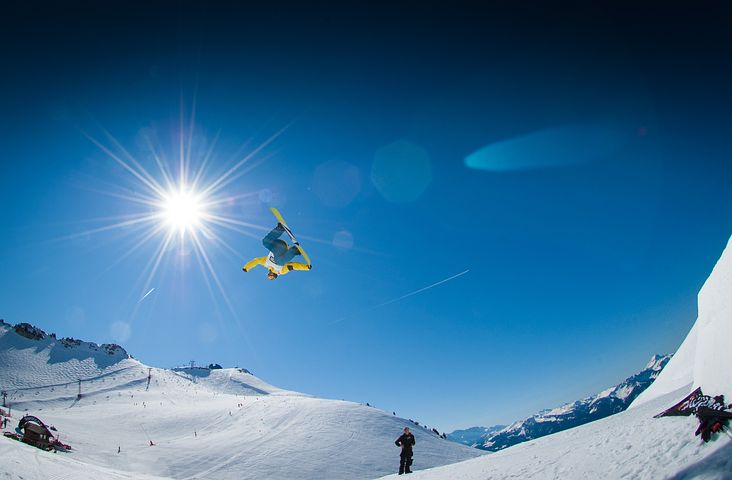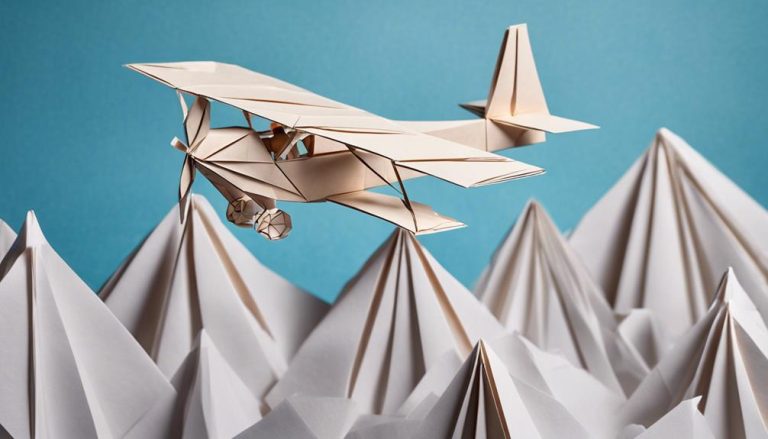General Rules of Wingsuit Flying
Wingsuit flying is an extreme sport that requires proper training, technique, and safety precautions. Understanding the general rules before your first wingsuit flight is critical. Wingsuiting involves wearing a jumpsuit that forms wing-like fabric between the arms and legs to glide through the air after skydiving from an airplane or cliff. Proper equipment maintenance, assessing weather and flight conditions, executing flight maneuvers, and emergency protocols are all key elements of wingsuit flying.

This article outlines the fundamental rules and guidelines for wingsuit flying. We’ll cover the necessary equipment including the wingsuit, helmet, goggles, altimeters, and parachute. Weather minimums, choosing safe flight paths, basic body positioning, and introductory flight maneuvers will be explained as well. Emergency procedures for equipment malfunction or loss of control are also important protocols to learn. Following these essential rules minimizes risk and sets you up for an incredible human flight experience. Let’s start by looking at equipment and maintenance procedures.
Equipment Requirements
You’ll need some essential equipment to safely enjoy wingsuit flying.
The first and most important piece of equipment is, of course, the wingsuit itself. This specialized jumpsuit is designed with fabric wings between the arms and legs, allowing you to glide through the air like a bird. The wingsuit should fit snugly but still allow for a full range of motion. It’s crucial to choose a wingsuit that’s the right size and shape for your body to ensure maximum comfort and safety.
Next, you’ll need a helmet to protect your head in case of any unforeseen accidents or collisions. Look for a helmet that’s specifically designed for wingsuit flying and offers both impact protection and good visibility.
It’s also important to wear a jumpsuit or base layers made of durable and wind-resistant material to protect your body from the elements and potential abrasions during flight.
In addition to the wingsuit, helmet, and jumpsuit, there are a few other key pieces of equipment you’ll need. These include a parachute system, altimeter, and audible altimeter.
The parachute system is your ultimate safety net, allowing you to safely land after your wingsuit flight. The altimeter helps you gauge your altitude during flight, while the audible altimeter provides audio cues to ensure you maintain a safe altitude.
Pre-Flight Safety Checks
Before you take flight in a wingsuit, there are a few important safety checks you need to do.
First and foremost, make sure you have all the necessary safety equipment, such as a helmet and a parachute.
Additionally, it’s crucial to be thorough in your checks, as even the smallest oversight can have serious consequences.
Necessary Safety Equipment
Make sure you have all the necessary safety equipment before starting your wingsuit flight.
The right gear can make a significant difference in ensuring your safety while soaring through the skies.
First and foremost, a well-fitted wingsuit is crucial. It should be made of durable material and have reinforced stitching to withstand the intense forces of flight.
Additionally, a properly fitting helmet is essential to protect your head in case of any impact.
Don’t forget to wear goggles to shield your eyes from wind and debris.
A reliable altimeter is vital for monitoring your altitude and ensuring you deploy your parachute at the right time.
Lastly, a well-maintained parachute system is critical for a safe landing.
Importance of Thoroughness
Ensure that your pre-flight safety checks are thorough and comprehensive to minimize the risk of any potential issues during your wingsuit flight.
Before taking to the skies, it’s crucial to go through a series of checks to ensure your wingsuit is in optimal condition. Start by inspecting the wingsuit fabric for any tears or damage. Check the zippers and ensure they’re functioning properly.
Verify that the attachment points and harness are secure and in good working order. Pay close attention to your helmet, goggles, and altimeter, making sure they’re all properly fastened and functioning correctly.
Additionally, check your parachute system, ensuring that the canopy, lines, and reserve chute are all in top shape.
Exit Techniques
When preparing for wingsuit flying, remember to practice your exit technique to ensure a smooth and controlled start to your flight. The exit is a critical moment that sets the stage for the entire wingsuit flight. To execute a proper exit, follow these steps:
- Position yourself correctly: Stand at the edge of the exit point with your toes hanging over. Keep your body relaxed and lean slightly forward to maintain balance.
- Launch confidently: As you initiate the exit, push off with your legs, extending your body into a slight arch. This will create forward momentum and help you achieve a stable position in the air.
- Maintain control: Once airborne, focus on maintaining stability. Keep your body symmetrical and your arms slightly extended. This will help you control your pitch and prevent unwanted spins or rolls.
- Monitor your altitude: As you exit, be aware of your altitude and the distance to the designated landing area. This will help you plan your flight path and ensure a safe descent.
By practicing your exit technique, you can develop the necessary skills to start your wingsuit flight with confidence and control. Remember to always prioritize safety and seek guidance from experienced wingsuit flyers.
Happy flying!
Flight Maneuvers and Control
To improve your flight maneuvers and control, try experimenting with different body positions and wing movements. By adjusting your body position, you can alter your flight path and stability. For instance, extending your arms and legs can increase your surface area, providing more lift and allowing you to stay in the air longer. On the other hand, tucking your limbs close to your body can reduce drag and increase forward speed.
You can also manipulate your wingsuit’s wings to control your flight. Raising your arms can increase your descent rate, while lowering them can slow it down. By shifting your weight slightly, you can change the direction of your flight. For example, leaning to the left will cause you to turn left. It’s important to note that small adjustments can have a significant impact on your flight, so practice and precision are key.
Furthermore, mastering the art of flight maneuvers requires a deep understanding of your wingsuit’s aerodynamics. Familiarize yourself with the principles of lift, drag, and thrust to optimize your control. Additionally, always be aware of your surroundings, including other wingsuit flyers and potential obstacles. Safety should always be your top priority.
Emergency Procedures
If you find yourself in a critical situation while wingsuit flying, remember the three essential emergency procedures to ensure your safety. These procedures are designed to help you react quickly and effectively in case of an emergency.
First and foremost, if you experience an uncontrollable spin or other stability issues, the first emergency procedure is to initiate a violent backflip. This maneuver can help stabilize your body and regain control. Remember to tuck your legs in and keep your body as compact as possible during the backflip.
Secondly, if you find yourself too close to a solid object, such as a cliff or a building, the second emergency procedure is to perform a quick turn away from the object. This maneuver can help you avoid a collision and gain distance from the potential danger.
Finally, in the event of a parachute malfunction, the third emergency procedure is to cut away the malfunctioning parachute and deploy your reserve parachute. It’s important to stay calm and follow the proper procedures for cutting away and deploying your reserve parachute to ensure a safe landing.
Landing Techniques
As you approach the landing zone, carefully plan your descent and prepare for a smooth touchdown. Landing in a wingsuit requires precision and control. One important technique is to maintain a gradual descent angle, which allows you to maintain control and avoid a hard landing. By adjusting the angle of your body and using your arms to control your flight path, you can ensure a safe and controlled descent.
Another technique to master is the flare. Just before touchdown, you need to flare your wingsuit by extending your arms and legs. This increases your drag and slows down your descent, allowing for a softer landing. It’s important to time your flare correctly to avoid landing too fast or too slow.
Additionally, it’s crucial to choose a suitable landing area. Look for a clear and open space, free from obstacles such as trees or buildings. Avoid landing near water or steep slopes as these can increase the risk of injury. Before landing, make sure to assess wind conditions and adjust your approach accordingly.
Frequently Asked Questions
What Are the Physical Fitness Requirements for Wingsuit Flying?
To fly a wingsuit safely, you’ll need to meet specific physical fitness requirements. These include having good cardiovascular endurance, strength in your core and upper body, and excellent coordination and balance skills.
Are There Any Weight Restrictions for Wingsuit Flying?
Yes, there are weight restrictions for wingsuit flying. It is important to comply with these limits to ensure your safety and the proper functioning of the equipment. Make sure to check the specific guidelines for your wingsuit.
How Long Does It Typically Take to Learn Wingsuit Flying?
It typically takes several months of dedicated training and practice to learn wingsuit flying. This involves mastering the techniques of flying, maneuvering, and landing safely. It’s an exhilarating journey worth the effort!
Can Wingsuit Flying Be Done in All Weather Conditions?
Yes, wingsuit flying can be done in all weather conditions. However, it is important to note that certain weather conditions, such as strong winds or heavy rain, may not be suitable for safe wingsuit flying.
Are There Any Age Restrictions for Wingsuit Flying?
Yes, there are age restrictions for wingsuit flying. It is important to be of legal age and meet certain physical requirements to ensure safety. Always check with the regulations and guidelines before attempting this exhilarating sport.
Wingsuit flying is an exhilarating and challenging extreme sport that requires careful preparation and adherence to safety protocols. By following the general rules outlined in this article, such as conducting pre-flight checks, mastering exit techniques, and practicing emergency procedures, you can enjoy the thrill of controlled flight and soar through the skies with confidence.
Remember to always prioritize safety and continue honing your skills to fully experience the incredible freedom and adrenaline rush that wingsuit flying offers. Safe flying!






